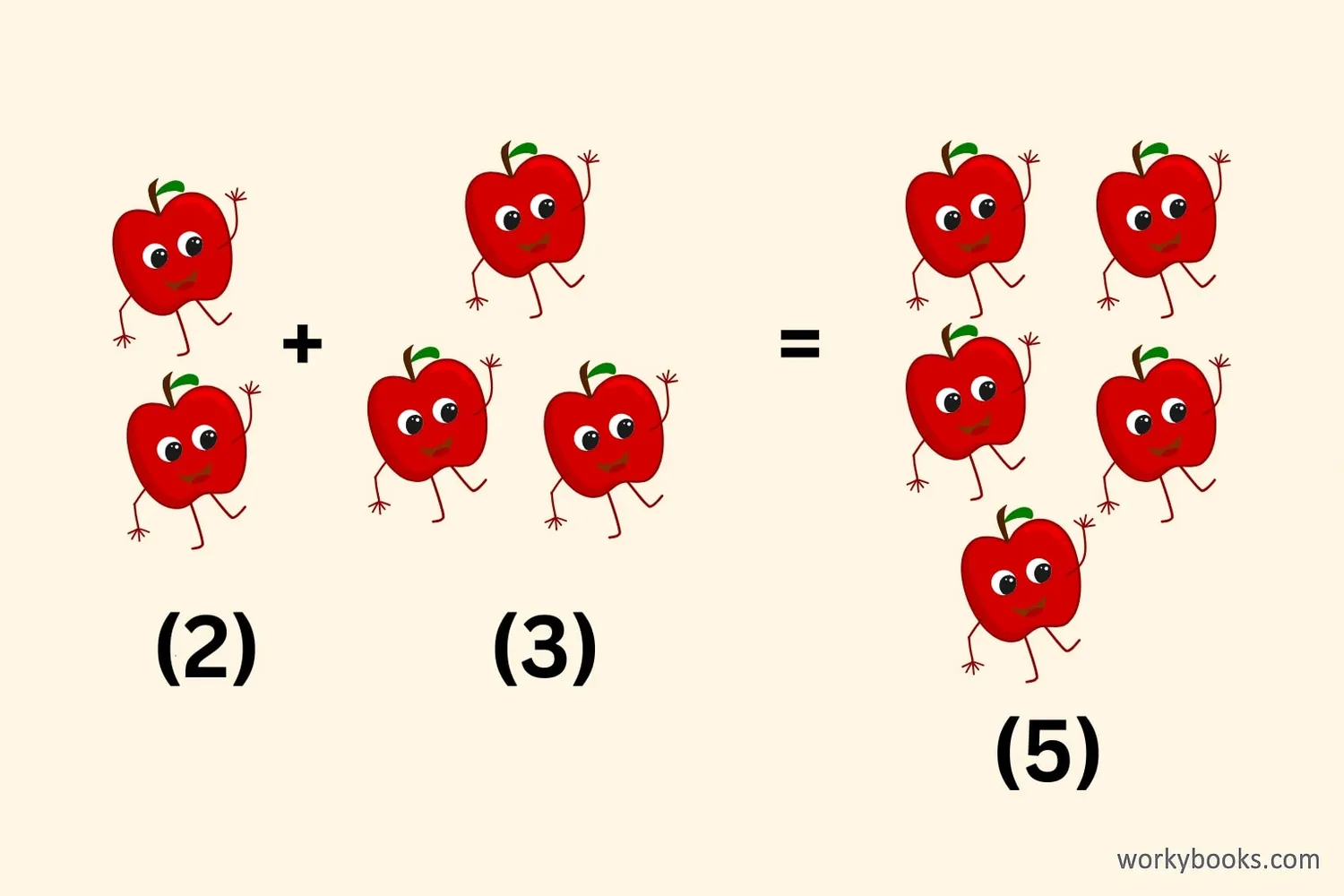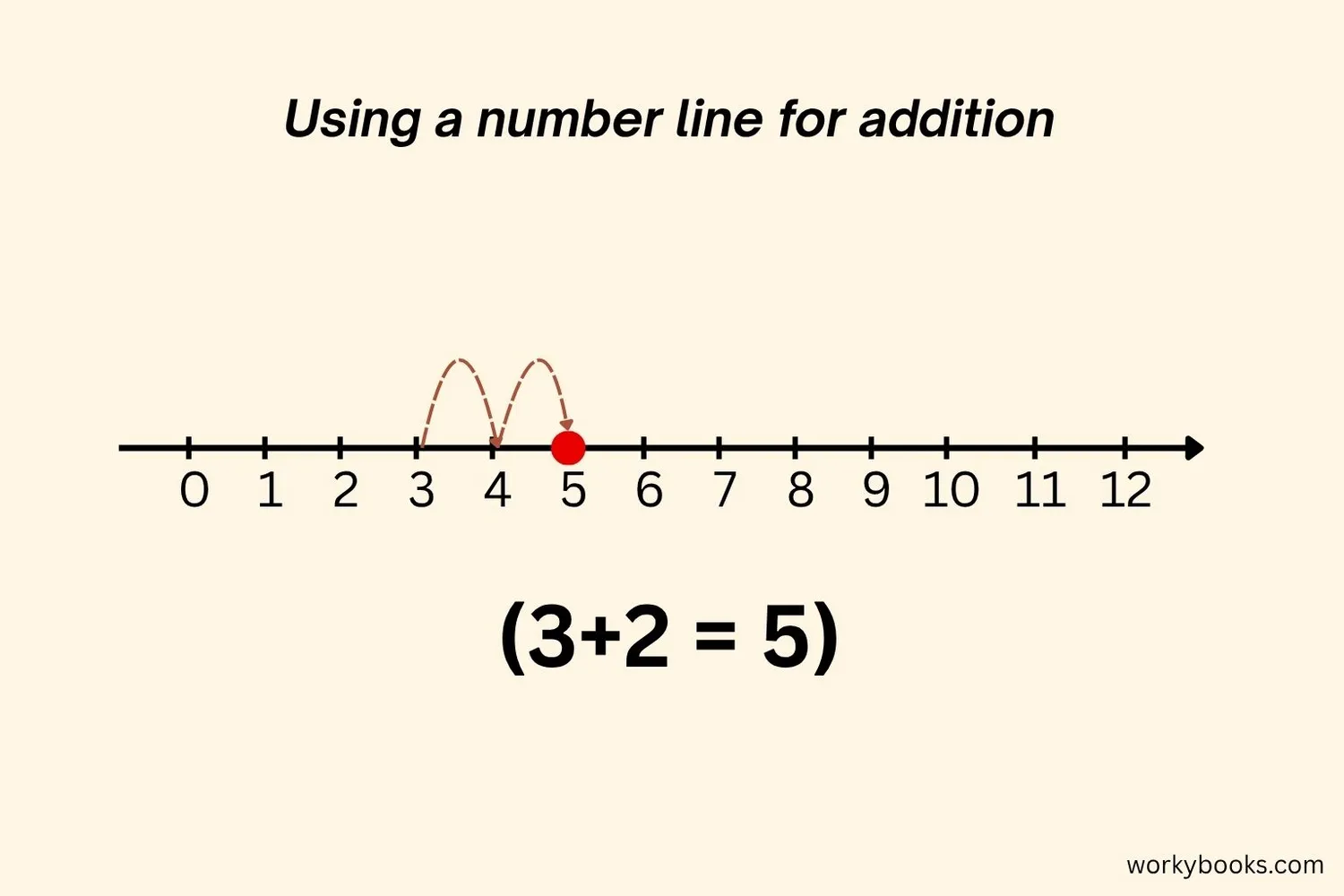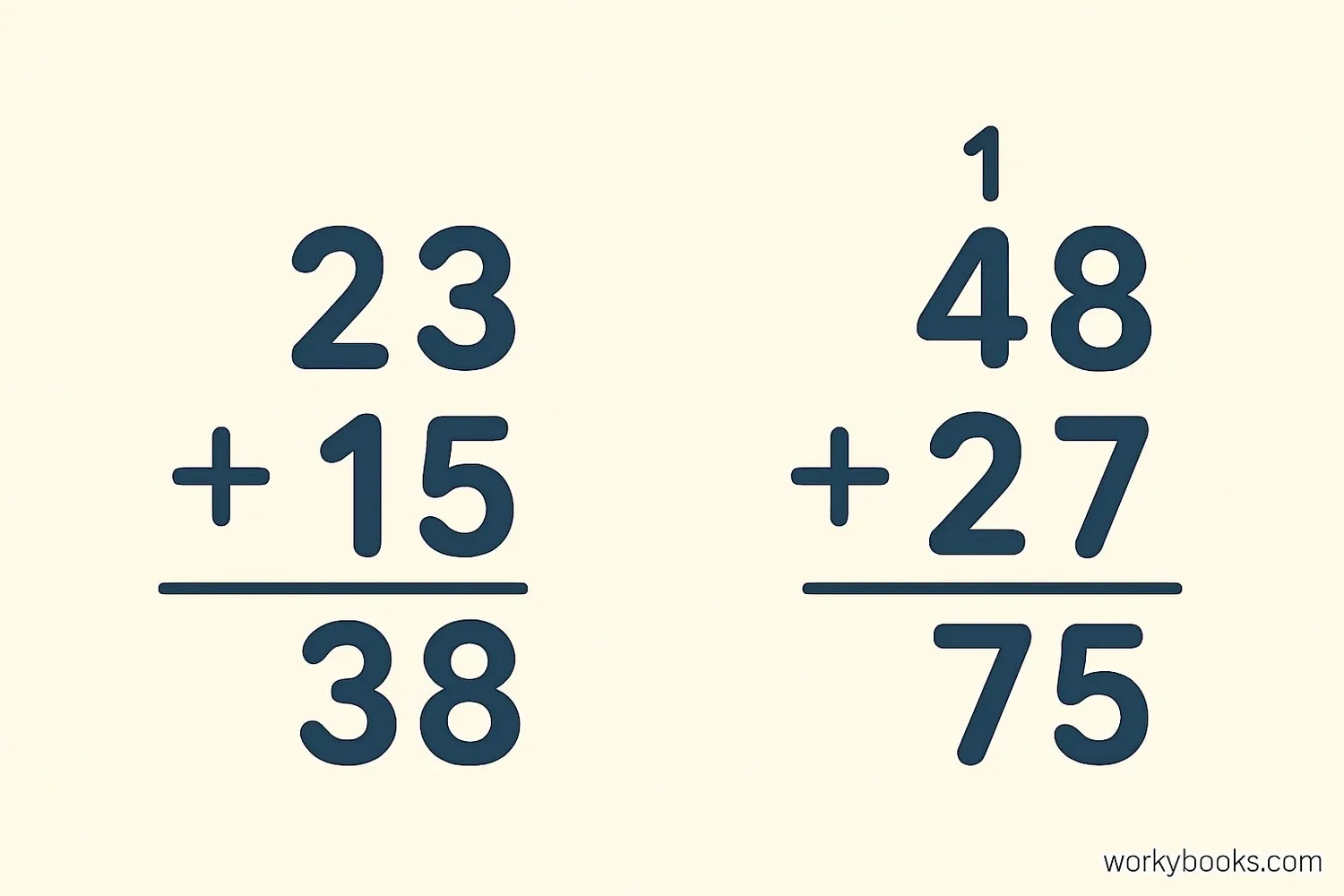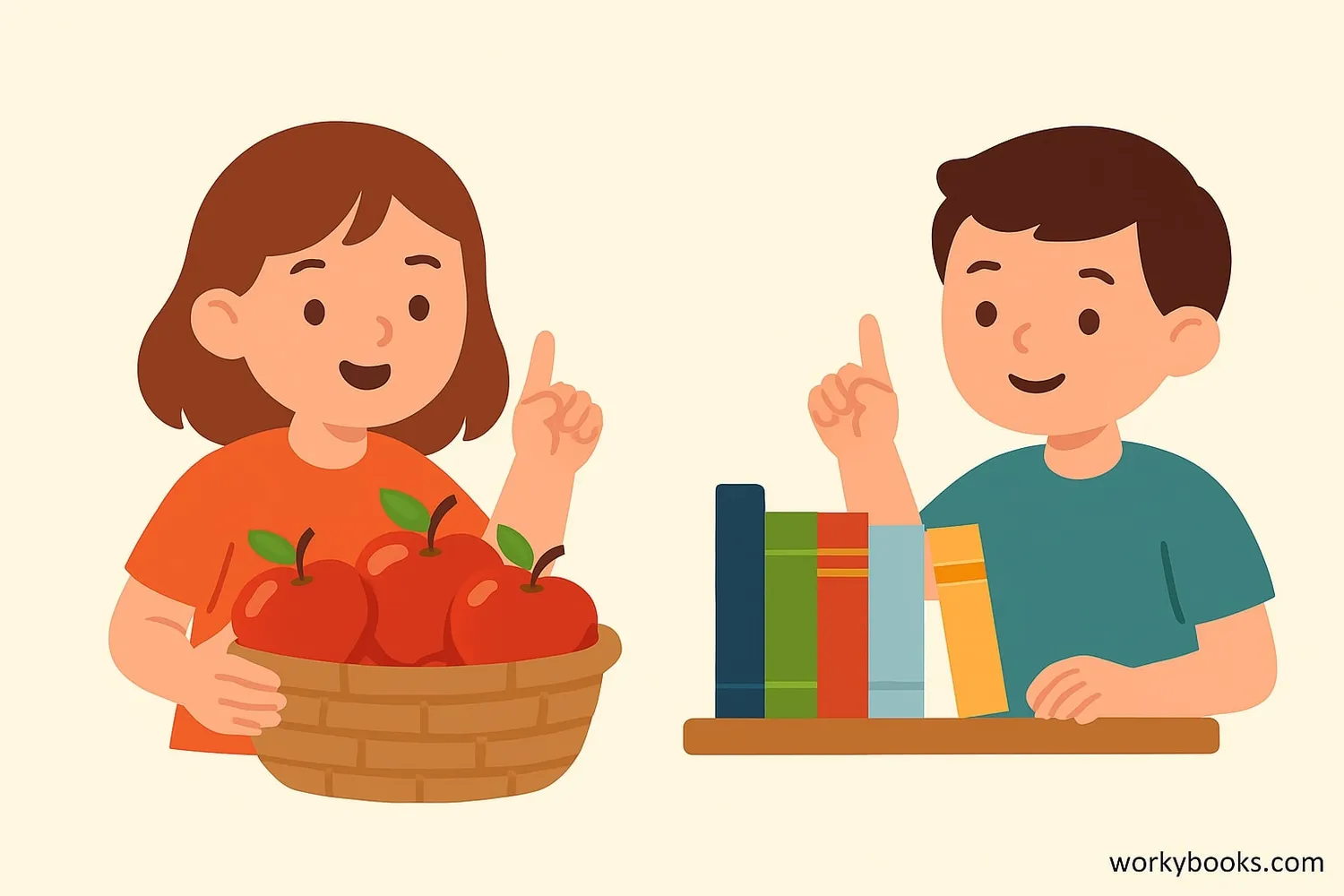Addition: Math Operations - Definition, Examples, Quiz, FAQ, Trivia
Learn addition concepts with easy explanations, visual examples, and practice activities
What is Addition?

Addition is one of the four basic math operations. It means combining two or more numbers to find their total. When we add numbers, we're putting them together to get a larger number called the sum or total.
In an addition problem:
- The numbers being added are called addends
- The result is called the sum
- The symbol for addition is + (plus sign)
- The symbol for equals is =
For example: 3 + 2 = 5
Here, 3 and 2 are addends, and 5 is the sum.
Key Concept
Addition is the process of putting together or combining quantities to find the total amount.
How to Add Numbers

There are several ways to add numbers:
1. Counting Objects: Use physical objects like blocks or fingers. For 3+2, count 3 objects, then 2 more, and count all together.
2. Counting On: Start from the first number and count up. For 4+3, say "4" then count "5, 6, 7".
3. Number Line: Draw a line with numbers. Start at the first number, move right the number of spaces equal to the second number.
4. Mental Math: For small numbers, just remember the answer!
Remember
Addition is commutative - changing the order of addends doesn't change the sum. 2+3 is the same as 3+2!
Addition Methods

As numbers get larger, we use different methods to add them:
Vertical Addition (Without Regrouping):
- Write numbers one above the other, lining up the place values
- Add the digits in each column starting from the right
- Example: 23 + 15 = 38
Vertical Addition (With Regrouping):
- When a column adds up to 10 or more, "carry" the extra to the next column
- Example: 48 + 27 = 75 (8+7=15, write 5, carry 1; 4+2+1=7)
Column Addition:
- Similar to vertical addition but used for adding multiple numbers
- Add one column at a time, carrying as needed
Pro Tip
Always start adding from the right (ones place) and move left. This makes carrying easier!
Addition Examples

Basic Addition
Three apples plus four apples equals seven apples.
Without Regrouping
24 books on the shelf plus 13 new books equals 37 books total.
With Regrouping
38 cars in the lot plus 27 new arrivals equals 65 cars (8+7=15, carry 1; 3+2+1=6).
Multiple Addends
12 chocolate cookies, 8 vanilla cookies, and 5 oatmeal cookies make 25 cookies total.
Practice Tip
Try adding things around you - how many windows in your house? How many chairs? Practice makes perfect!
Addition Practice Quiz
Test your addition skills with this 5-question quiz. Choose the correct answer for each question.
Frequently Asked Questions
Here are answers to common questions about addition:
Math Trivia
Discover interesting facts about math and addition:
Ancient Addition
The earliest evidence of addition dates back to 20,000 BC with notched bones. The ancient Egyptians used addition for commerce as early as 3000 BC, using a base-10 system similar to ours.
Animal Addition
Some animals demonstrate basic addition skills. Studies show chimpanzees, monkeys, and even birds can perform simple addition with small numbers, suggesting basic math skills may have evolutionary roots.
Fastest Addition
The world record for adding ten 10-digit numbers is 1 minute 57 seconds, set by Shakuntala Devi in 1980. She was known as the "Human Computer" for her incredible mental calculation abilities.
Math Brain Power
Practicing addition and other math operations activates multiple areas of the brain, improving memory, logical reasoning, and problem-solving skills. Regular math practice can actually make you smarter!





